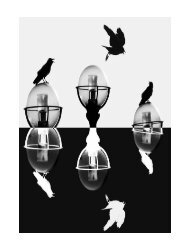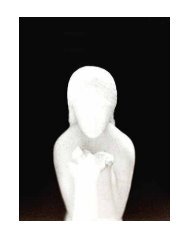Odds and Ends Essays, Blogs, Internet Discussions, Interviews and Miscellany
Collected essays, blogs, internet discussions, interviews and miscellany, from 2005 - 2020
Collected essays, blogs, internet discussions, interviews and miscellany, from 2005 - 2020
You also want an ePaper? Increase the reach of your titles
YUMPU automatically turns print PDFs into web optimized ePapers that Google loves.
This point is referring to Heaney’s polemical prose as it appears in his book, The Redress of Poetry. Stanton’s position
doesn’t, though, address my article’s detailed discussion and analysis of the comments Heaney makes in that book,
regarding his preferences and encouragement for a poetic that utilises descriptive and accurate language.
Rob Stanton’s Critique:
Heaney, as Side sees him, is a self-limited advocate of phanopœia over melopœia and logopœia, but this actually sets
him apart from the legacy of The Movement, seen more directly in poets like Simon Armitage, Sean O’Brien and new
laureate Carol Ann Duffy.
Jeffrey Side’s Response:
This seems to be saying that Armitage, O’Brien and Duffy owe more to the legacy of The Movement than Heaney
does. If Stanton chooses to re-categorise Heaney in this way, that is his prerogative, but as I mention in my article,
Robert Conquest in the Introduction to his anthology of Movement poetry, New Lines, describes Movement poetry as
‘empirical in its attitude’ and that values clear meanings along with a ‘refusal to abandon a rational structure and
comprehensible language’. To me, Heaney, Armitage, O’Brien and Duffy fit adequately within this classification.
Indeed, Heaney, endorses what Conquest says, examples of which can be found in my article, but which Stanton has
not mentioned.
Rob Stanton’s Critique:
‘St Kevin and the Blackbird’ may or may not be typical of Heaney’s work, but the anxieties it uncovers surface at
regular intervals. To argue, as Side might, that these moments of weakness and doubt are staged simply so he can
come back all the stronger, reasserting his competence and the validity of his aesthetic-i.e. that they are mainly a
rhetorical device-misses the regularity and intensity of these self-debasements.
Jeffrey Side’s Response:
As I never discussed Heaney’s ‘St Kevin and the Blackbird’ in my article, I have no strong opinions about it other
than to say that it is a combination of prose-like accurate description and philosophical discursiveness. (Incidentally,
as I have written about elsewhere, philosophically discursive poetic language can be seen as a mimesis of thought
processes, and, therefore, just as descriptive as Heaney’s other uses of language in poems.) I would not say about ‘St
Kevin and the Blackbird’, as Stanton imagines I might, that the philosophically discursive elements are: ‘staged
simply so he can come back all the stronger, reasserting his competence and the validity of his aesthetic-i.e. that
they are mainly a rhetorical device’; that would be to credit me with too much interest in the poem. Its prose-like
descriptiveness can be seen in the first four stanzas:
And then there was St Kevin and the blackbird.
The saint is kneeling, arms stretched out, inside
His cell, but the cell is narrow, so
One turned-up palm is out the window, stiff
As a crossbeam, when a blackbird lands
And lays in it and settles down to nest.
Kevin feels the warm eggs, the small breast, the tucked
Neat head and claws and, finding himself linked
Into the network of eternal life,
Is moved to pity: now he must hold his hand
Like a branch out in the sun and rain for weeks
Until the young are hatched and fledged and flown.
If these stanzas are not obvious enough to be recognised as prose-like and descriptive, let us render them in the
following way:
157




